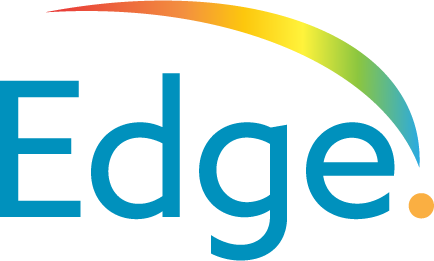For Laura Romeo, Ph.D., Instructional Designer, Edge, her love for creating engaging and student-centered learning experiences began at the start of her career as an elementary school teacher. “I was very interested in designing lessons that didn’t just deliver the content to students, but catered to their individual learning needs,” shares Romeo. “The learning outcomes improved when they could interact with the content and go at a pace that made sense for them. For this reason, I earned my master’s in instructional design and technology, and then several years later, got my Ph.D. in teacher education and learning sciences. While I was working on my doctoral degree, my research focused on the pre-service teacher and how they could use Universal Design for Learning (UDL) principles and instructional design for learning paired with assistive technology to make instruction more inclusive.”
Through this experience, Romeo says she gained a deeper understanding of how thoughtful design and instruction could create more accessible learning environments for all students in the classroom. “Over the years, I’ve recognized how essential accessibility is for the success of the learner. Throughout my career, I’ve led the development of curriculum projects, worked with subject matter experts to create interactive and engaging content, and designed courses on workplace diversity. Now at Edge, I have the opportunity to partner with institutions across the country to help them develop their digital learning environments and create dynamic and accessible learning experiences.”
“Over the years, I’ve recognized how essential accessibility is for the success of the learner. Throughout my career, I’ve led the development of curriculum projects, worked with subject matter experts to create interactive and engaging content, and designed courses on workplace diversity. Now at Edge, I have the opportunity to partner with institutions across the country to help them develop their digital learning environments and create dynamic and accessible learning experiences.”
— Laura Romeo, PH.D.
Instructional Designer, Edge

Promoting Inclusive Learning Design
In designing for today’s learners and instructors, Romeo has found working with such a diverse range of institutions to be an exciting challenge. “Since every institution has unique needs, I enjoy trying to find the solution that fits well with their specific goals. One of the first projects I worked on was redesigning a graduate program for working professionals. The instructor wanted to ensure the content and activities were engaging and allowed their students to apply what they’re learning in real-world situations. We needed to stick closely to the textbook for quizzes and tests, but could be more creative with the projects. We followed UDL principles in the design and gave students a choice in how they showed their understanding. They could choose from different mediums, including a presentation, written report, or a combination of multimedia tools. Providing this type of flexibility allows students to connect the material to their own experiences, and in this case, they could pull from both their personal and professional lives to make learning more relevant and meaningful.”
With a passion for ensuring inclusivity is interwoven into learning design, Romeo helps institutions address accessibility gaps and create engaging educational experiences that cater to diverse learners, fostering an environment where every student can thrive and succeed. “Throughout my career, I’ve seen the difference thoughtful, inclusive design of instruction can make for the success of the student. On a recent project, we conducted an accessibility audit for an institution’s online courses. We reviewed the course structure and all course materials to determine if they were compliant with accessibility standards and found ways to make improvements that could help different learners access and interact with the content more effectively.”
“From teaching in the classroom to designing curriculum and working with educational technology, I’ve seen how powerful it can be to build learning environments with accessibility and inclusion at the forefront,” continues Romeo. “To be proactive rather than reactive can be a real game changer, not only for the institutions, but also for the students that they’re serving. It allows you to identify specific barriers and implement strategies that enhance the overall learning experience and empower students with varying needs to engage fully with the curriculum, ultimately leading to higher retention and satisfaction rates.”
Addressing the Challenges of Digital Transformation
As more and more institutions transition from traditional face-to-face instruction to an online or hybrid model, there are common challenges and goals that each organization is trying to address. “Many institutions want to improve accessibility in online courses to meet compliance standards and redesign courses to make them more engaging for diverse learners,” explains Romeo. “Colleges and universities want their online learners to feel like they’re getting more from the courses than just logging on to complete the discussion and take a quiz. Integrating new technologies can help fuel engagement and create more dynamic learning environments.”
When moving a course from an in-person format to an online version, Romeo says a common concern is losing the personal connection between instructor and student. “I worked with an instructor recently who was transitioning his Sustainability 101 course from in person to online. He had been teaching this course face to face for a few years and was worried about losing the important interactions that happen in the classroom. Through our brainstorming, we decided to incorporate live video sessions where students could hear from him as the subject matter expert. He also invited several guest speakers to join him during these presentations. We also incorporated asynchronous discussion forums that allowed students to participate in conversations back and forth between their classmates on their own time.”
“The instructor’s content remained his content and students can still feel connected to the material and each other, regardless of the digital format,” continues Romeo. “The digital learning environment was also modified to encourage students to tie the course content to their own lives. For example, they could choose to explore specific sustainability practices that impacted their own daily lives, or they could research sustainability issues in their local communities. This approach placed them at the center of their own learning where they had to pull in the content and make it more applicable to real life. Creating a thoughtful course design with these modifications led to deeper engagement and created a highly interactive online course that the instructor felt maintained the depth of his in-person version.”
Through tailored assessments, skill-building workshops for faculty and staff, and thoughtful strategic planning, Edge can offer digital accessibility support and help institutions navigate these changes and ensure course offerings and web properties meet quality standards. To optimize courses for online learning, Edge can also assist in revolutionizing teaching methods, identifying effective strategies to elevate business practices, and consistently and proactively address the needs of differently abled members in their learning community.
Meeting ADA Accessibility Standards
The new Title II of the Americans with Disabilities Act (ADA) aims to clarify compliance standards regarding enhancing accessibility and inclusion for mobile apps and web content. “ADA phase II will likely present challenges for many institutions,” says Romeo. “Accessibility compliance is not just about checking the box; it’s about creating a learning environment where every student has the opportunity to succeed. While the compliance piece is necessary, these guidelines also level the playing field and provide a foundation for building inclusive learning environments. Since looking at the full scope of compliance can feel overwhelming, I would suggest that institutions approach the process by breaking it down into manageable steps.”
“Part of Phase II is going to require institutions to update their video content to make sure all lectures are captioned and transcribed,” continues Romeo. “This can seem like a very large project and will require pinpointing the areas that need updating, creating scalable solutions, and finding the most efficient ways to ensure all content meets accessibility standards. Making these updates will not only meet compliance requirements, but will also improve the learning experience for all students, not just those with disabilities. Ultimately, this commitment to accessibility fosters a more inclusive and supportive educational environment that benefits everyone in the academic community.”
Through tailored assessments, skill-building workshops for faculty and staff, and thoughtful strategic planning, Edge can offer digital accessibility support and help institutions navigate these changes and ensure course offerings and web properties meet quality standards. To optimize courses for online learning, Edge can also assist in revolutionizing teaching methods, identifying effective strategies to elevate business practices, and consistently and proactively address the needs of differently abled members in their learning community.
Cultivating Personalized Learning Experiences
To help make technology more approachable and provide institutions with real world insights and solutions for the common challenges they face, the EdgeCast video series explores a variety of tech-forward topics. Romeo joined Josh Gaul, Associate Vice President & Chief Digital Learning Officer, Edge, and Jaimie Dubuque, former Teaching and Learning Technologist, Rider University, Romeo for a recent session called Leveraging AI for Universal Design for Learning (UDL) in Higher Education. “Technology can sometimes feel overwhelming, even if you know what you’re doing,” says Romeo. “The EdgeCast series takes topics and breaks them down into useful, easy-to-digest information. As the series evolves, I can see us diving into more specialized topics, like how to effectively integrate emerging technologies like artificial intelligence (AI) into the classroom or long-term management of large-scale digital transformations at an institution.”
“The landscape for education continues to rapidly change and I enjoy learning and adapting to new trends,” continues Romeo. “I see myself as a lifelong learner and is one of the reasons I’m drawn to this field. I try to stay current by following tech blogs, reading journals, exploring emerging technologies, and staying connected with professional networks to exchange ideas and keep my creativity fresh. In looking ahead, I think we’ll see an even bigger shift toward hybrid and personalized learning models with digital elements that offer more flexibility for students and educators. More institutions will use data analysis and AI to cultivate personalized learning experiences and tailor the content to support each student’s individual needs.”
“Flexibility and customization are going to be major themes in the future and learners will be more in control of their own learning, deciding when and how to access the content. By working together, we can reshape our educational approach to ensure inclusivity for all types of learners and create a dynamic and equitable learning environment that empowers every individual to thrive on their academic journey.”
If you want to rapidly update your web and digital environments to meet accessibility standards, Edge’s team of experts can provide an instructional design review and a remediation roadmap. Learn more at njedge.net/accessibility-compliance-services.
Get on the forefront of tech enlightenment with EdgeCast! Check out the most recent series at
njedge.net/edgecast.


